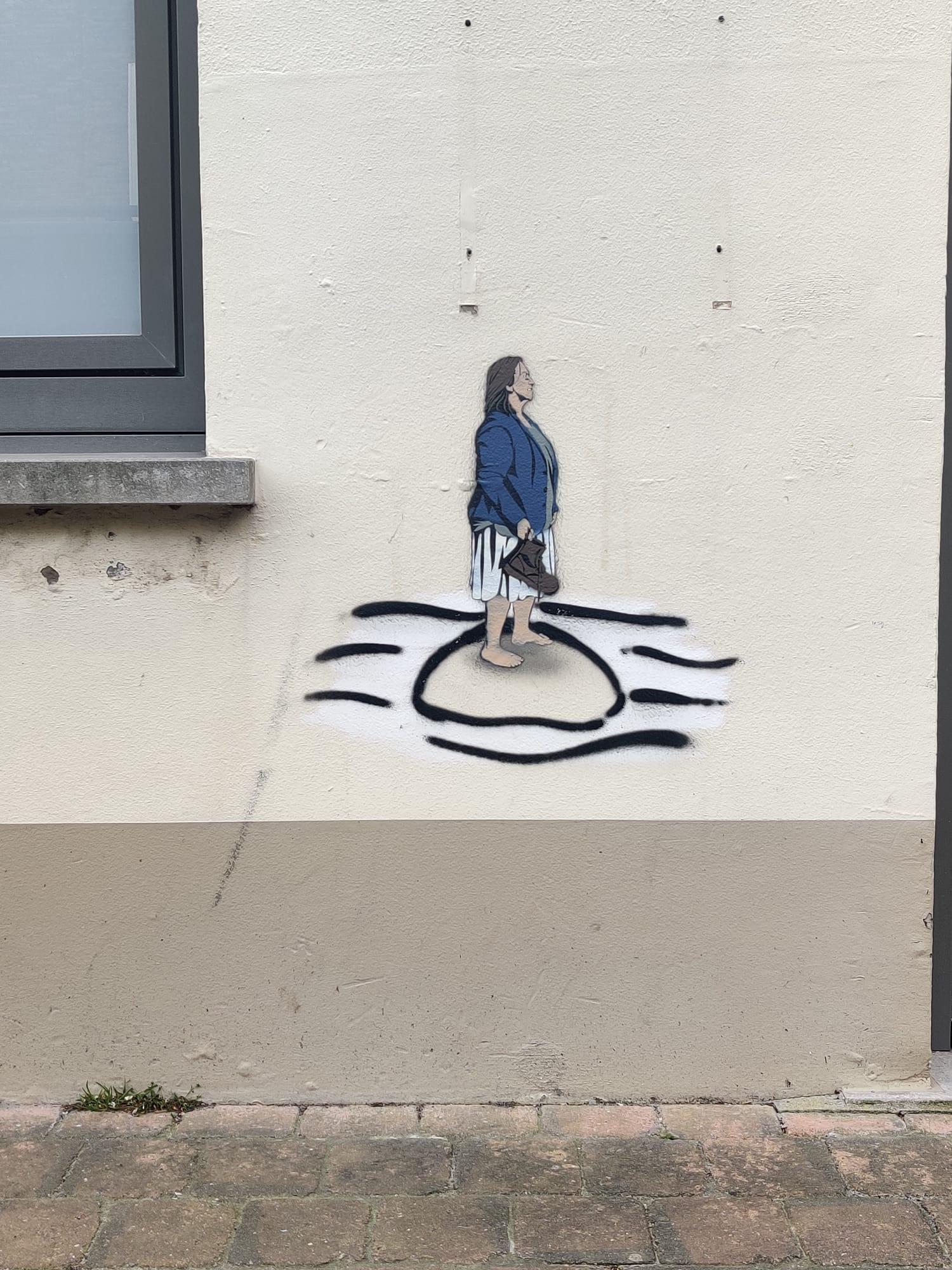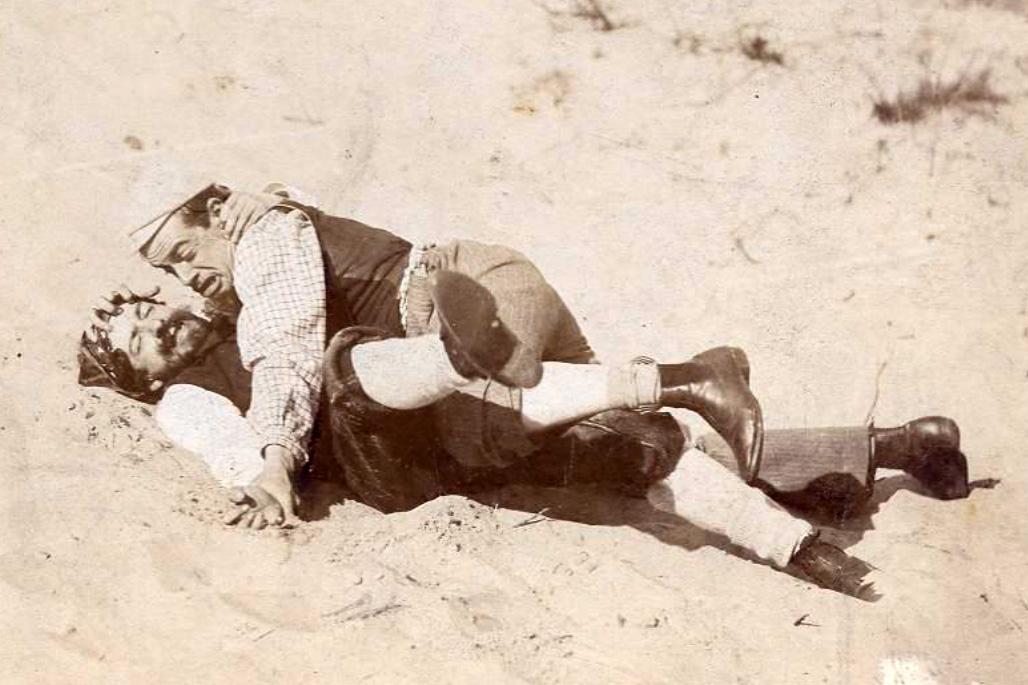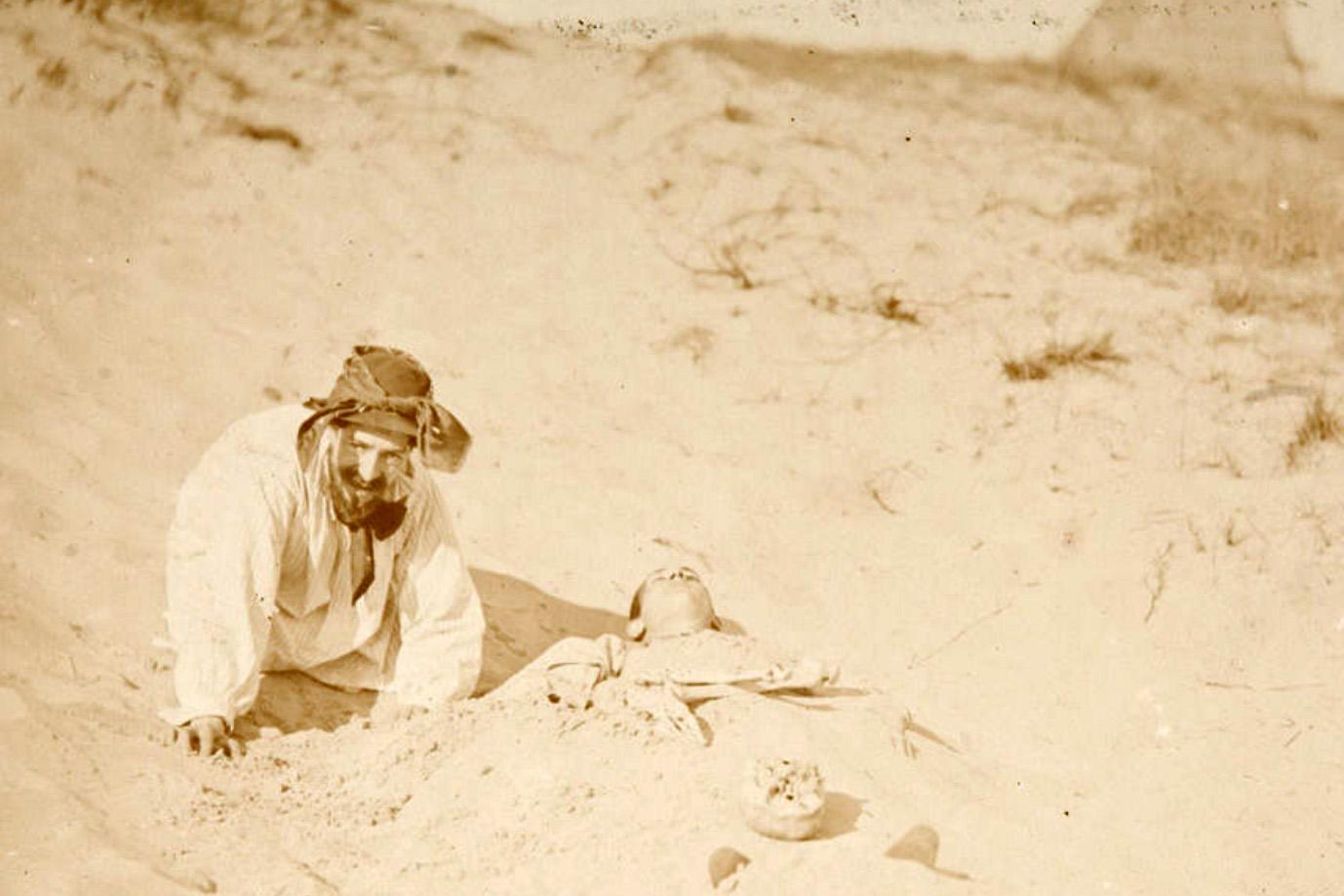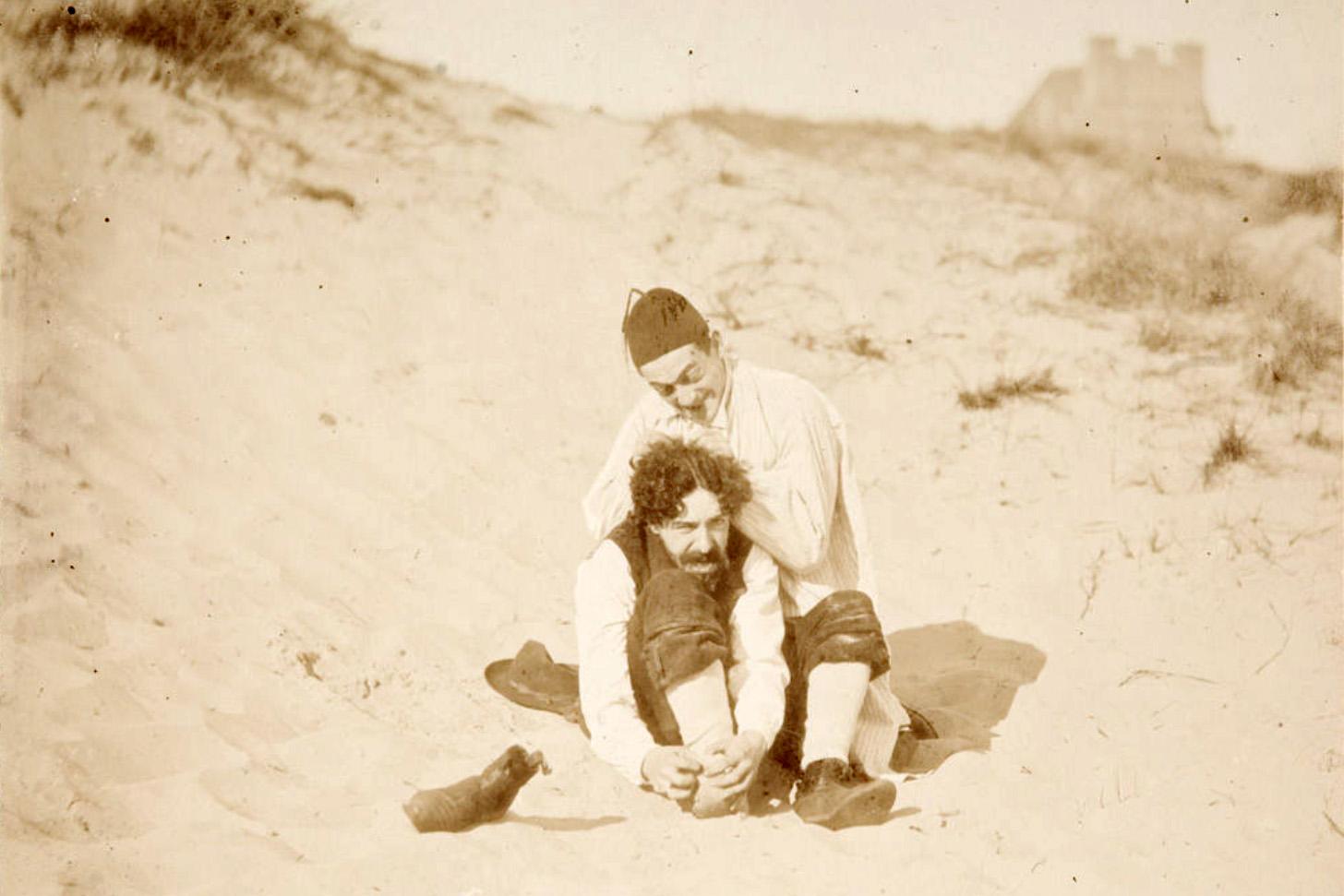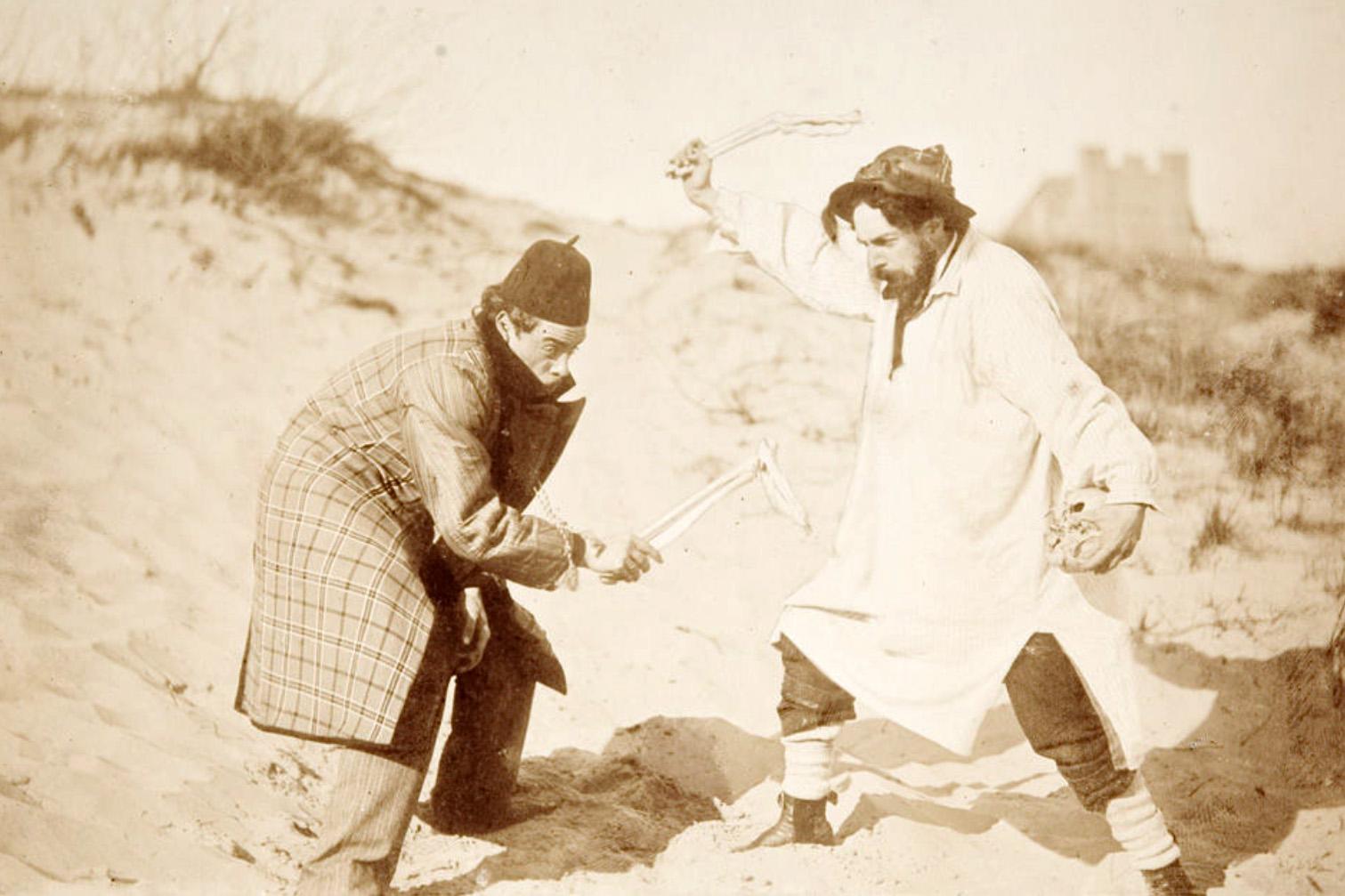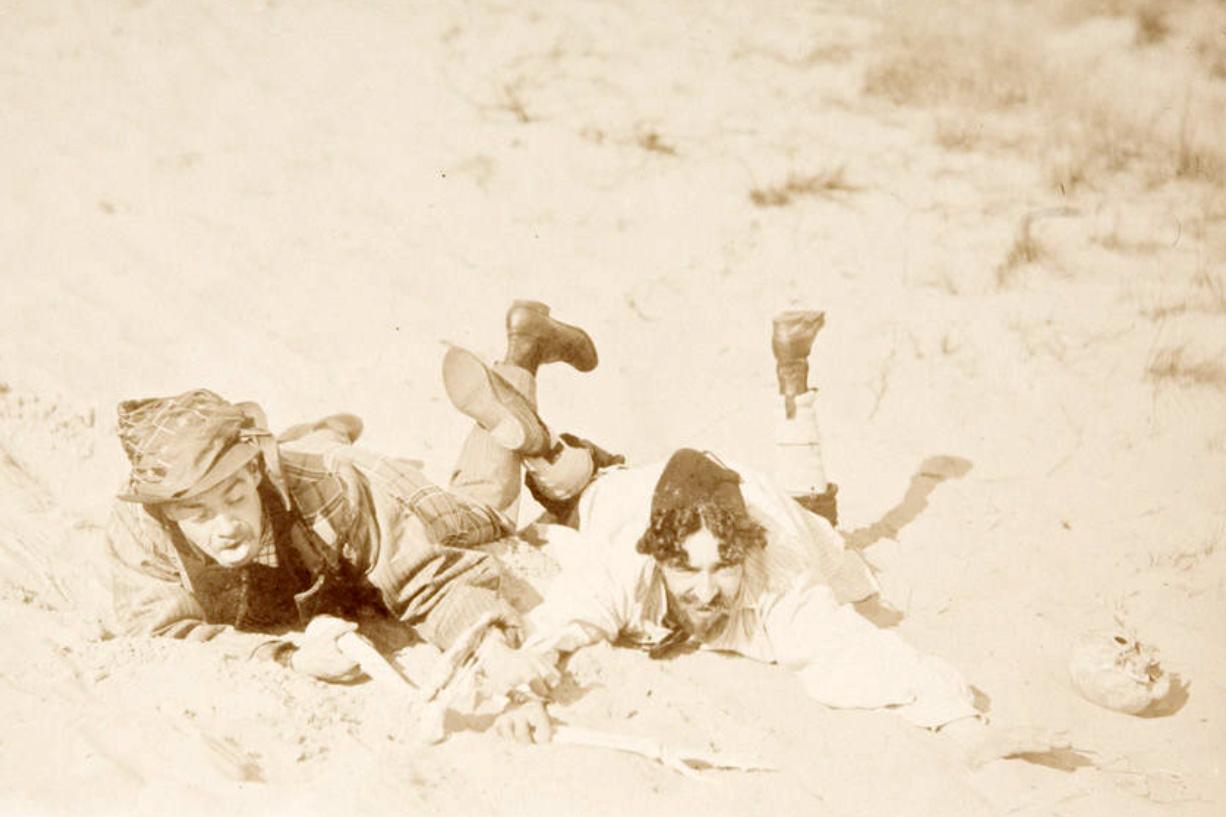Sandra, resident:
She has already taken off her shoes and is standing on a mound in the sand. Will she go through with it, or not? Venturing into the sea was a much bigger step than it is today. And what about James Ensor, did he ever go swimming? We don’t know. Probably not.
In most photographs, he is dressed from head to toe and his clothing is very formal, even on the beach. But there is one series of photographs that suggests he could indeed let himself go in the sand. It shows the young Ensor fighting with Ernest Rousseau junior, a good friend from Brussels. It’s obviously all good fun, but there is one gruesome detail: they are attacking each other with human bones and a skull.
It could well be that Ensor and Rousseau had simply found them in the dunes. Human remains often emerged from the sand in the 19th century. Victims of the Siege of Ostend. Between 1601 and 1604, tens of thousands of people were starved and slaughtered here during one of the bloodiest episodes in our history. Back then, the bodies were often simply dumped in the dunes. Chances are that the skulls in Ensor’s family souvenir shop also came from the beach. In Ensor’s paintings too, we are probably looking at the grinning skull of an Ostend local or a Spaniard from the 1600s.
